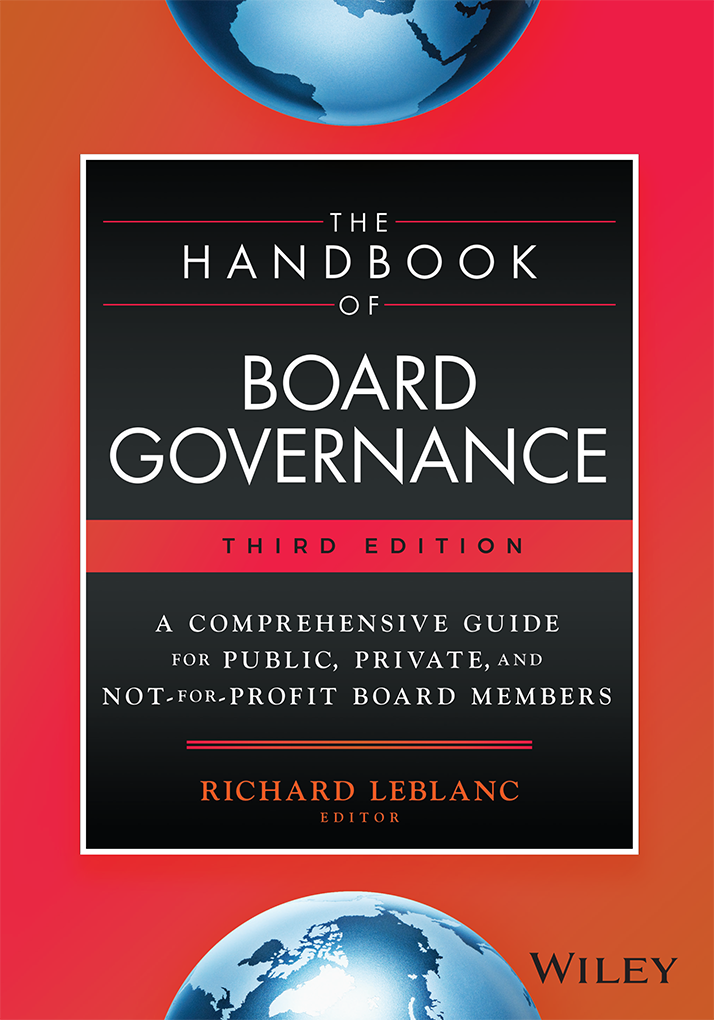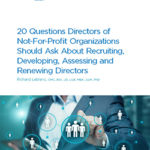I recently served as a compensation consultant asked by board and compensation committee chairs to recommend changes to a CEO’s compensation package. I was clear with the CEO that my client was the chairs, not the CEO, and my task was to embed best practices into the CEO’s compensation plan.
Here are the principles and touch points I employed. They do not necessarily flow from the above example, but also incorporate lessons learned over the years. The requirements for compensation committees are changing now, with guidance and codes arising from the BCBS, the FSB, the SEC (pdf) and the CSA (pdf).
1. Engage in CEO succession planning
Nothing handcuffs a compensation committee more, and gives an incumbent CEO greater bargaining power during pay negotiations, than the lack of immediate successors, internal or external. CEOs resist succession planning because it is not in their interest. The board should insist on regular, robust reporting on CEO succession plans, and do market checks. The board should own this process, not the CEO.
2. Ensure committee members understand the business.
The compensation committee is vulnerable to self-interested CEOs favoring certain metrics, or adjustments that result in enhanced bonus and equity. Members therefore must adequately understand the business and performance metrics that drive strategy and affect behavior to be the counter point. Many compensation committees are not up to this task, in my view.
4. Have backbone and ensure no undue influence by the CEO.
A CEO may subtly co-opt and manage a compensation committee so it is composed of “friendlies,” who are sympathetic to the CEO, and resist full board involvement. Committee members need to have independence of mind, no personal relations with the CEO, and not be long serving. In two separate stock-option backdating cases I advised on, I recommended that the CEO not be in the room when compensation is discussed, and that a female director be recruited to sit on the committee.
5. Recruit a female director to sit on or chair the compensation committee.
If you think your compensation committee needs greater independence and expertise, bring on a female compensation consultant with 20 years experience who has done 50 compensation plans, including ones in your industry, with no ties to management, and then watch how things change for the better.
6. Use balanced performance metrics and stretch goals to drive behavior.
If a CEO is not listening to the board, or emphasizing certain things at the expense of others, change the compensation package. In my example, I recommended, modified and defined metrics in leadership, strategy, risk and financial, and customer, shareholder and board relations. The weightings, threshold and targets should be challenging and documented. There should be a balance between quantitative, formulaic, short-term metrics and qualitative, judgmental and longer-term ones.
7. Implement risk-adjusted compensation.
Compensation consultants are still promulgating the metrics that got us into the financial disaster. Risk-adjusted metrics and after the fact adjustments are however being requested by regulators. See my recent article (pdf) on this. Insist on tailored, adjustments to account for risk and compensation materializing before bonuses are awarded and equity vests. Compensation committees should have approval over pay of each risk-taker in the organization.
8. When hiring a consultant, ensure independence and knowledge of best practices.
Similar to non-audit related services, I would not hire a compensation consultant who works for a firm that provides non-committee related services to management. If a compensation consultant is doing his or her job properly, the CEO and senior management is likely not their biggest fan. Interests could even be adverse. Negotiation of terms, etc., should occur between the consultant and chairs. Chairs need to step up and inform CEOs of this new normal.
9. In linking performance and pay, document the “hows” and “whys”.
Regulators, shareholders and other stakeholders want to see how and why the committee and board made the decisions it did, in clear non-legal language. This does two things. It forces organizations to be transparent and accountable externally. Second, internally, it imposes rigor and diligence on the committee’s deliberations, reporting and assurance processes.
10. Involve key shareholders and chairs in compensation dialogue, without the CEO.
It used to be that CEOs did not want to leave the room during executive sessions. Now they are reluctant to leave the room during dialogue with shareholders. There should be a mechanism for the chair of the board and/or chair of the compensation committee to have direct exposure to, and hear views from, significant shareholders. The CEO should not interfere.
Conclusion
If a compensation committee does all or most of the above, there should be likelihood that shareholders will endorse a pay-for-performance plan.
Posted by Richard Leblanc on Aug 1, 2011 at 9:21 am in CEO, Organizational Performance and Compensation |












